Chongqing, China
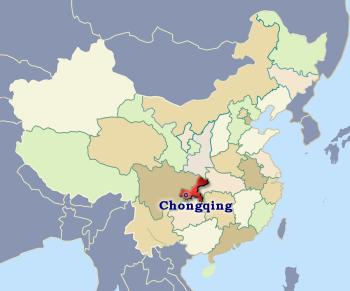
| Province | Chóng qìng 重庆 'duplicate celebrate' |
| Short name | 渝 Yú |
| Capital | Chongqing City |
| Population | 32.054 million (2.27%) [19th] comparison table |
| Area | 82,000 km2 [31,660 mile2] (0.85%) [26th] |
| GDP | 78,002 (9.99%) [10th] |
| Neighbors | Shaanxi Sichuan Guizhou Hubei Hunan |
| Others | or just click on the map |
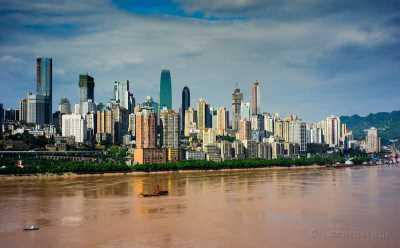
Chongqing is China's newest province, it was split off in 1997 from its large neighbor Sichuan. It is officially a ‘municipality’ rather than a province but includes a large rural area to the east of the huge city of Chongqing which makes it quite different to the other metropolitan provinces of Beijing; Tianjin and Shanghai.
Situated on the Yangzi at its rocky confluence with the Jialing River, Chongqing serves as the dominant port and gateway for trade with Sichuan Province and the rest of China. For centuries the only main road to Sichuan was through the city. Chongqing is an ancient place, it has a heritage reaching back to the Bayu Culture ➚ in the depths of history. The name means literally ‘double celebration’, which needs a little explanation. Originally it had a succession of names : Jiangzhou (江州) ‘river city’; ‘mountain city’; and also Yu 渝 then Gong 恭. It became Chongqing (双重喜庆) in 1189 when Zhao Dun became King of the region and later the Song Emperor of China and so changed the city's name to mark this double celebration. Unlike most Chinese cities that are laid out in a grid pattern, the hilly topology has led to many small, meandering streets that give the city its unique charm. It became a British treaty port in 1890 giving them control of central China along the Yangzi.
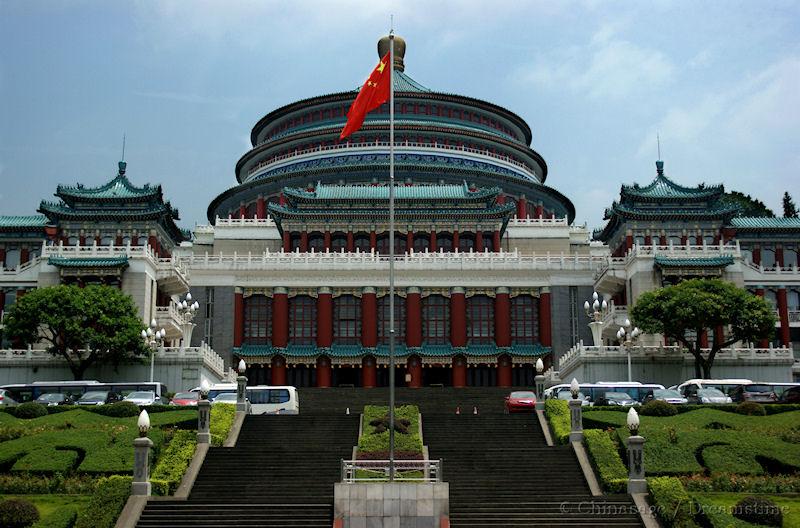
Chongqing History
Chongqing was the capital of China under the Nationalist forces of Chiang Kaishek during the Japanese invasion (1938-47) after Beijing and then Nanjing had fallen. The city's frequent winter fogs kept the city relatively free from the threat of Japanese bombers. With America on China's side in the war, the city became the headquarters of General Joseph Warren Stilwell ➚ 1942-44, whose headquarters can still visited today. More recently the city was the power base of the disgraced politician Bo Xilai ➚. Chaotian Men is the old waterfront where porters used to take the goods from river boats and haul them up the steep slope into the city. The city has a ‘Three Gorges Museum’ holds many ancient tomb relics, some rescued from the flooding when the dam was built. The Great Hall of the People built in 1954 is modeled on the Temple of Heaven in Beijing. Nine miles west of Chongqing city is Ciqi Kou which is a famous porcelain center during the Ming dynasty.
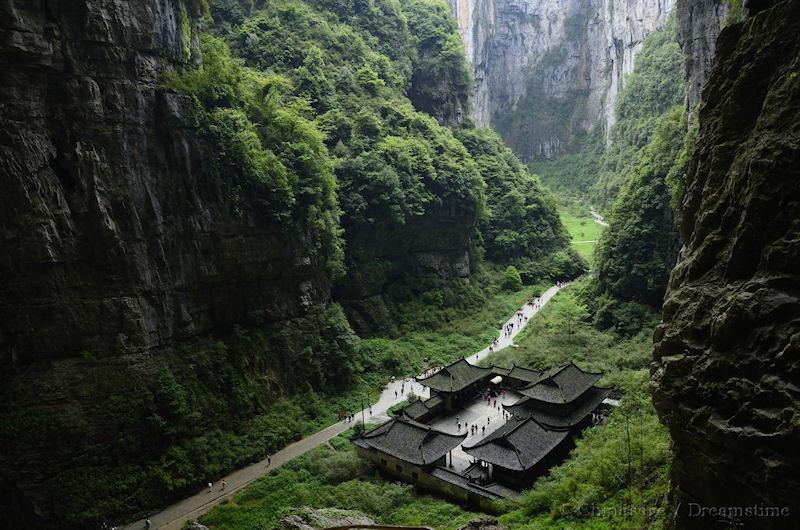
The construction of Three Gorges Dam in Hubei has made navigation from the sea all the way up the Yangzi to Chongqing far easier. It is now one of the fastest growing cities in the world. Many new large buildings and roads are being built each year. A full range of industries are represented in the bustling city.
Places to visit
The historic voyage through the Three Gorges from Yichang up to Chongqing is now a leisurely cruise. For centuries boats had been pulled through by trackers along narrow cliff paths - a very dangerous process. The famous gorges are Qutang, Wu and Xiling (Xiling is actually in neighboring Hubei province). Shibao Zhai monastery, The City of ghosts at Mingshan, and the smaller scale Three Gorges on Daning tributary river can be seen on the trip.
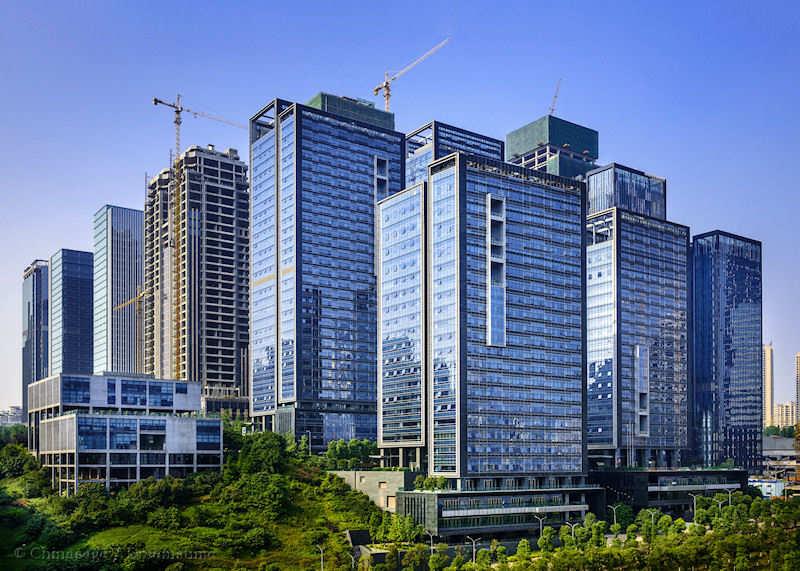
The rock carvings at Dazu ➚ are a UNESCO World Heritage site. 50,000 carvings of many types date back to the Tang dynasty. Most are of Buddhist inspiration but others are from Daoism, Confucianism and Indian Buddhism. Fuling ➚ also has fine ancient carvings. There are a number of hot springs in the area. Fengdu ➚ is one of the towns which was partially submerged when the Three Gorges Dam was built on the Yangzi.
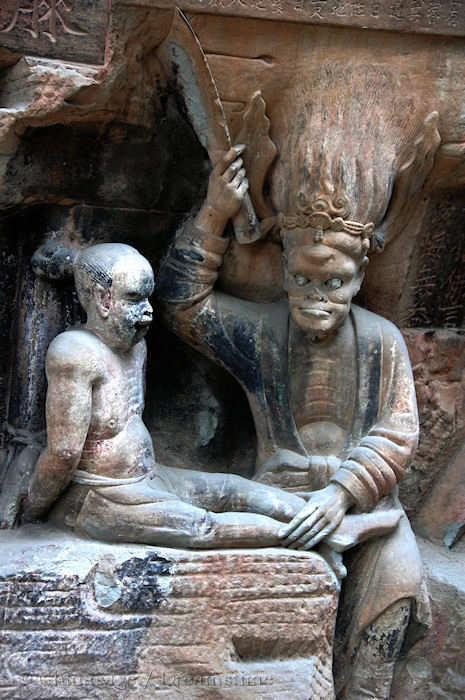
Geography
Hot and humid for much of the year, Chongqing City is known as one of China’s ‘three furnaces’; it is often submerged in smog. Rural Chongqing to the east of the city is very much like neighboring Sichuan, as it consists of densely populated and rich agricultural land. The border of the province follows the Yangzi river into Hubei. Bamboo is an important crop and is put to a multitude of uses.
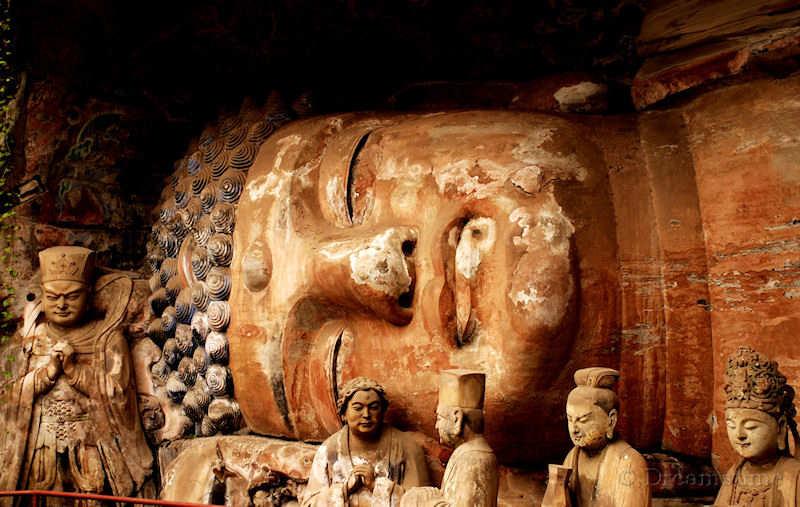
Airports
The airport has 2 terminals and is located 13.0 miles (21.0 kms) from Chongqing City. Live Flight information ➚, Airport information ➚, rank in China 10
International Links to :Japan Korea Singapore
See map of location Chongqing Jiangbei International Airport
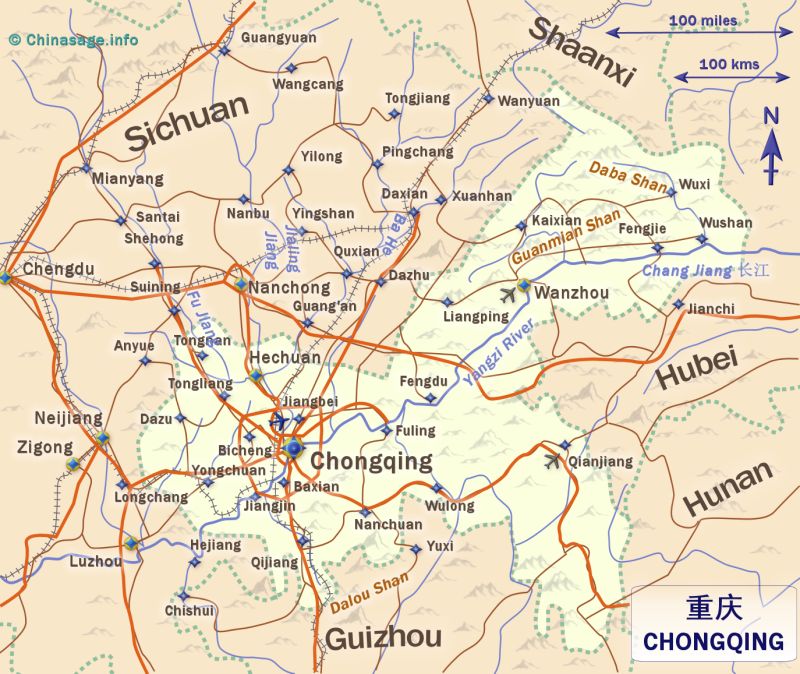
Google map of Chongqing
Bing map of Chongqing ➚
Show Bing Map ➚
Chongqing Climate
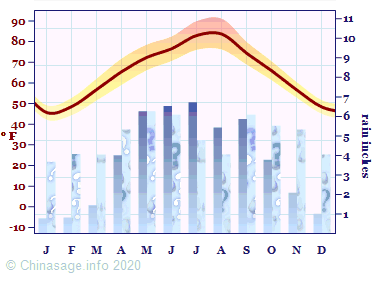
| Major Cities | Population | |
|---|---|---|
| Chongqing City | 重庆 | 7,457,600 |
Web page: 1890: Chongqing - Britain %7c china's external relations - a history ➚
Book: A Map History of Modern China: Catchpole: Heinemann: 1976 p. 52
Book: Insight Guides: China: APA publications: 1994 pp. 315-316
Book: Lonely Planet: China: 1988 pp. 47, 657-659
Book: Nagel's Encyclopedia guide: China: Nagel: 1978 pp. 1264-1272
Web page: Chongqing (wikipedia) ➚
Web page: Chongqing Travel: Chongqing History ➚
Web page: Map of Chongqing: China and travel guide ➚
City populations for 2012, Province statistics National Bureau of Statistics 2014